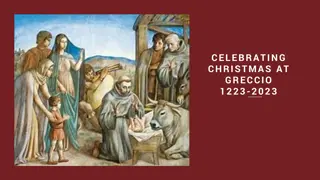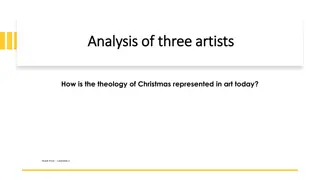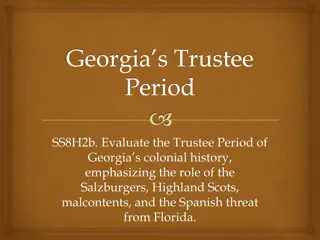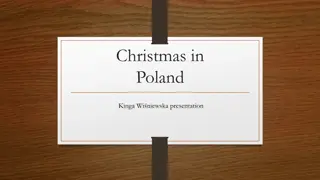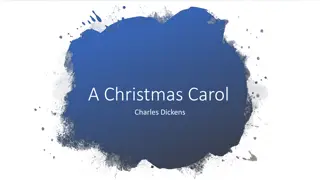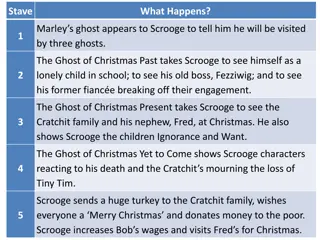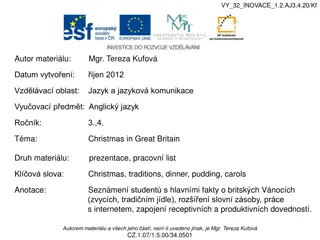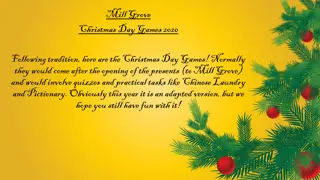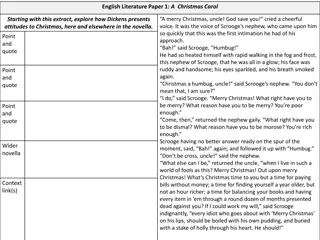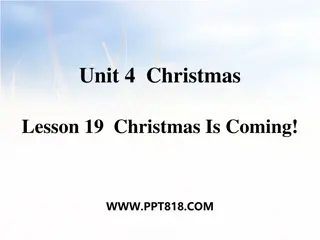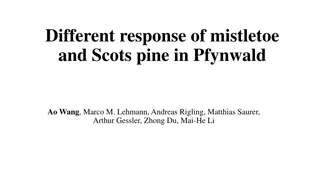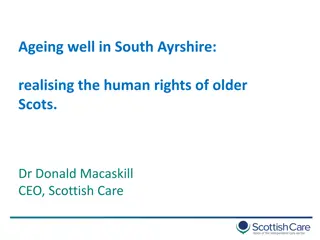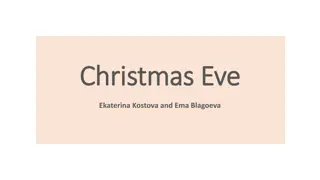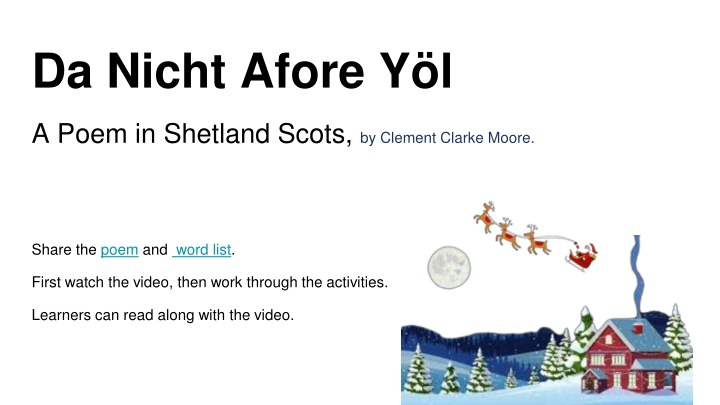
Shetland Scots Christmas Poem: Da Nicht Afore Yl by Clement Clarke Moore
Enjoy the Shetland Scots version of the classic Christmas poem "The Night Before Christmas" by Clement Clarke Moore. Dive into the Shetland dialect, explore the unique translation, and engage in fun activities based on the festive poem.
Download Presentation

Please find below an Image/Link to download the presentation.
The content on the website is provided AS IS for your information and personal use only. It may not be sold, licensed, or shared on other websites without obtaining consent from the author. If you encounter any issues during the download, it is possible that the publisher has removed the file from their server.
You are allowed to download the files provided on this website for personal or commercial use, subject to the condition that they are used lawfully. All files are the property of their respective owners.
The content on the website is provided AS IS for your information and personal use only. It may not be sold, licensed, or shared on other websites without obtaining consent from the author.
E N D
Presentation Transcript
Da Nicht Afore Yl A Poem in Shetland Scots, by Clement Clarke Moore. Share the poem and word list. First watch the video, then work through the activities. Learners can read along with the video.
First, lets learn about the Shetland dialect. Shetland Dialect Scots Language - Shetland Dialect
T'was Da Nicht Afore Yl Created in collaboration with Shetland ForWirds, here's a peerie (Shetland for small) festive treat for you to enjoy. Shetlanders young and old(er) came together to recite the famous poem, The Night Before Christmas by Clement Clarke Moore, with a Shetland twist. Here you can enjoy the classic verse translated into Shetland dialect. Discover more about our fascinating dialect at https://www.shetland.org/blog/shetland-dialect
Hit wis da nicht afore Yl, whan aa troo da hoose slide 7.mp3 naethin wis m vin, no even a moose. Da socks dey wir hingin (a)p da raep wi care. Task 1: Discuss the meaning of the start of the poem. Work out how you would pronounce these words.
Da bairns dey wir cooried aa snug i der beds, while tochts o sweeties danced i der heads Task 2: What were the children dreaming about?
Whin oot i da yerd der cam sic a clatter I sprang fae da bed ta see whit wis da maitter. Awa tae da window I med me a dash T r back da shutters an pu'ed up da sash. Task 3: In the text, find the expression that matches the picture.
Whin oot i da yerd der cam sic a clatter I sprang fae da bed ta see whit wis da maitter. Awa tae da window I med me a dash T r back da shutters an pu'ed up da sash. Task 3: In the text, find the expression that matches the picture.
Task 4: Match the Scots words to the English word. Whan, tae mi een foo o winder, whit sud appear But a mintie sleigh an eicht peerie deer. Wi a peerie aald driver, sae swack an sae quick, I kent in a meenit hit man be St Nick.
mi een wonder eicht peerie aald mintie my eyes wonder 8 small old tiny swack lively a meenit a minute
Task 5: How is Santa being described? First highlight the words you know. Then using your word list and an online dictionary, work out the rest of the description. Doon da lum Santy cam wi a graet muckle soond, wi a b die o laalies!
I gaffed whin I saa him, in spite o meesel! Task 6: How did the narrator react when he saw Santa.
A wink of his eye and a twist of his head Soon gave me to know I had nothing to dread; He spoke not a word, but went straight to his work, And filled all the stockings; then turned with a jerk, And laying his finger aside of his nose, And giving a nod, up the chimney he rose; Task 7: Re-write this paragraph in Scots.
Some advice when trying to write in Shetlandic Scots: Consistency of spelling is important to help the reader understand the meaning of the text. Use of the apostrophe to indicate a letter omitted should be reduced to a minimum, and confined mainly to indicating where a letter has been omitted from the normal Shetland usage - not the English. Ex: write o (not o for of), an (not an for and) or wi (not wi for with) - cr , d , p l, w r. is preferred to as, etymologically speaking, the sound represented is a modified o sound. Thus English 'poor', 'good' and 'swore' became 'p r', 'g d' and 'sw r'.
Compare your translation with the one from the story A wink o his een an tilt o his heid, sh n lat me ken I had naethin ta dreid! He spack naa a wird, but gud straicht tae his wark, An filt aa da socks, dan turned wi a jerk. An layin his finger alang da side o his nose, An gie in a nod, up da lum he sh n rose.
He loupit tae his sleigh, tae his reindeer a whistle, An awa dey aa fled laek da doon o a tistle. But I heard him cry oot, as he drove oot o sicht, A G d Y l tae you aa, an tae aa a g d-nicht!



